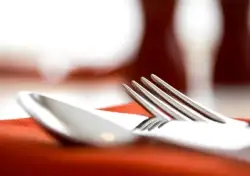
Does your income depend on the whims and fancies of your customers? Mine doesn’t. Sure, in the long run, my employment depends on my ability to gain and retain the attention of my readers. But as long as I manage to do that, I know what to expect by way of compensation for my labor. I can budget my expenditures accordingly. With predictability comes security and peace of mind.
No doubt that’s true for you as well. Unless, that is, you wait tables for a living. Or drive a traditional taxi. Or clean rooms at a Marriott.
Waiters and cab drivers and Marriott maids depend for at least a portion—and in some cases, a significant portion—of their livelihood on the discretion and kindness of others. On their customers’ tips, in other words.
Notwithstanding Marriott’s recent initiative to encourage hotel guests to tip room-cleaners, there appears to be a slow-growing movement to remove tipping from the compensation equation.
Uber, the wildly successful ride-sharing service, prominently features its no-tipping policy among its signature benefits. And indeed, many Uber customers cite the clear and clean pricing as one of the service’s advantages over traditional taxis. (Whether Uber’s compensation policies are fair to its drivers is a separate issue, which is playing out in class-action suits seeking to revise their independent-contractor status.)
Among restaurants, especially those at the higher end of the price spectrum, there is an increasing willingness to address the fundamental unfairness of the tipping culture. As Pete Wells, the influential New York Times restaurant critic, put it: “It is irrational, outdated, ineffective, confusing, prone to abuse and sometimes discriminatory.” Still, while some high-profile restaurants (Per Se, the French Laundry) have begun including service in the bill, tipping remains the industry norm.
The latest eatery to chip away at the practice is celebrity chef Tom Colicchio’s Craft restaurant in New York. Eater NY reports that, beginning last week, Craft’s lunchtime prices “are inclusive of service.” On diners’ credit-card receipts, there is no tip line.
Yes, menu prices will increase somewhat, to allow the restaurant to raise the base wages of waiters, bussers, and bartenders. But for diners, who are no longer expected to add tips to their bills, the overall cost of a meal should remain about the same. If no-tipping lunches are successful, the policy will be extended to cover dinner service as well.
Colicchio’s rationalization for the move: “It’s time for a change. It’s time to pay the servers a salary.”
As do other businesses. And as do restaurants in most other parts of the world.
Because it’s fair and reasonable.
Reader Reality Check
What’s your take on tipping?
More From Smartertravel:
- 10 Weirdest Restaurants in the World
- These Are the World’s Best Restaurants
- America’s Most Haunted Restaurants and Bars
This article originally appeared on FrequentFlier.com.
We hand-pick everything we recommend and select items through testing and reviews. Some products are sent to us free of charge with no incentive to offer a favorable review. We offer our unbiased opinions and do not accept compensation to review products. All items are in stock and prices are accurate at the time of publication. If you buy something through our links, we may earn a commission.
Related
Top Fares From
Today's Top Travel Deals
Brought to you by ShermansTravel
Kenya: 14-Night Tour, Incl. Tanzania &...
smarTours
 vacation
$7125+
vacation
$7125+
7-Night Caribbean Round-Trip Cruise From Orlando:...
Norwegian Cruise Line
 cruise
$739+
cruise
$739+
Ohio: Daily Car Rentals from Cincinnati
85OFF.com
 Car Rental
$19+
Car Rental
$19+



